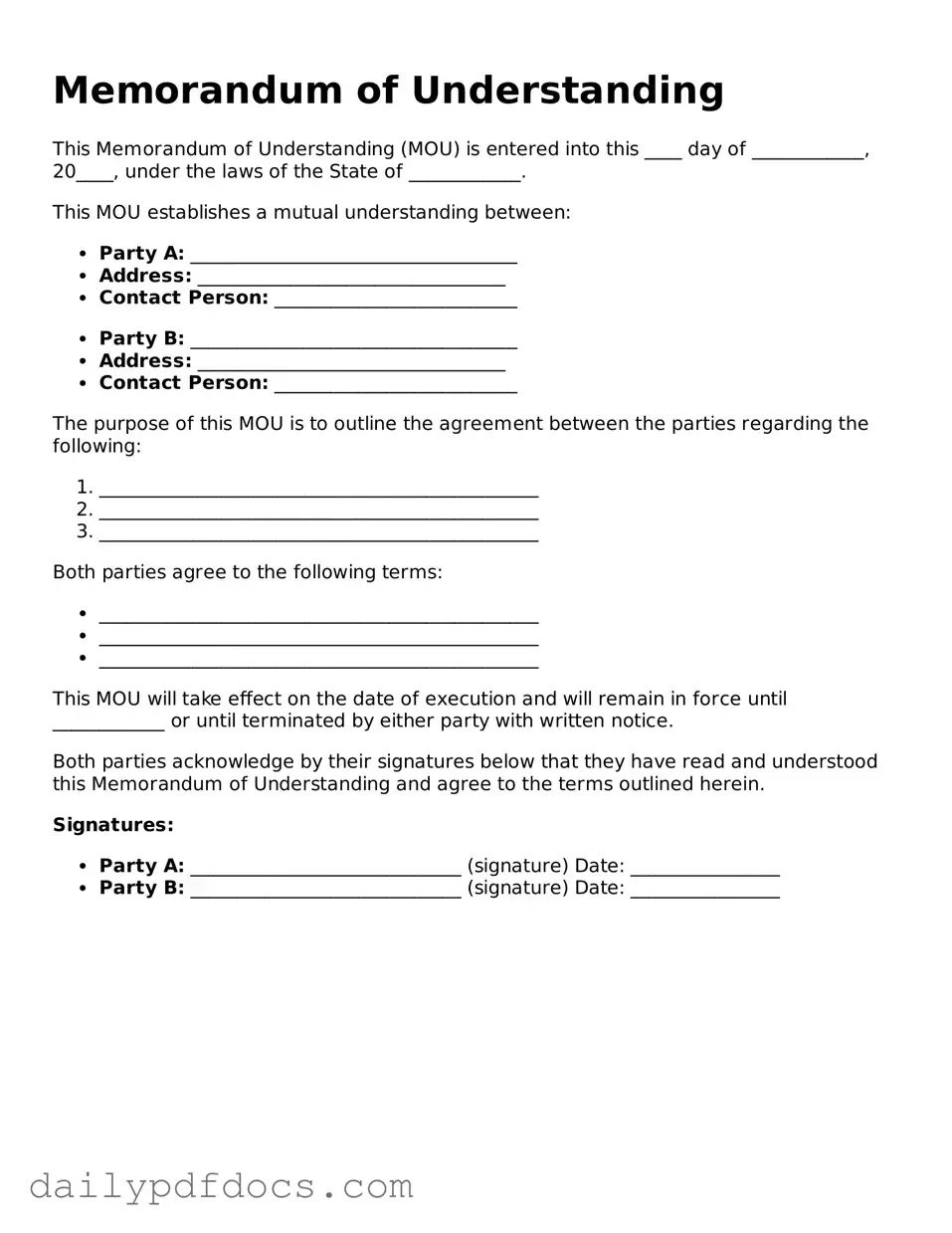What is a Memorandum of Understanding (MOU)?
A Memorandum of Understanding (MOU) is a formal agreement between two or more parties. It outlines the intentions, expectations, and responsibilities of each party regarding a specific project or relationship. While it is not legally binding like a contract, it serves as a useful tool for clarifying the terms of cooperation and ensuring everyone is on the same page.
When should I use an MOU?
An MOU is typically used when parties want to establish a mutual understanding before entering into a more formal agreement. It is beneficial in situations where collaboration is required, such as partnerships, joint ventures, or community projects. If you want to outline the framework for cooperation without the formality of a contract, an MOU is a suitable choice.
What should be included in an MOU?
Key elements of an MOU include the purpose of the agreement, the roles and responsibilities of each party, timelines, and any financial arrangements. It's also important to include terms for confidentiality and dispute resolution. While the specifics may vary based on the situation, clarity and detail are essential to avoid misunderstandings.
Is an MOU legally binding?
Generally, an MOU is not legally binding. However, it can contain binding provisions if the parties explicitly state their intent. For example, confidentiality clauses or specific commitments can be enforceable. It's crucial to clearly communicate the intent behind the MOU to avoid any confusion about its legal status.
How do I create an MOU?
Creating an MOU involves drafting a document that outlines the agreement between the parties. Start by clearly stating the purpose of the MOU. Next, define the roles and responsibilities of each party, and include any relevant timelines or financial commitments. Finally, ensure that all parties review and sign the document to signify their agreement.
Can an MOU be modified?
Yes, an MOU can be modified if all parties agree to the changes. It's advisable to document any amendments in writing to maintain clarity. This can be done through an addendum or a revised MOU. Keeping a record of changes helps to ensure that all parties remain aligned with the updated terms.
What are the advantages of using an MOU?
Using an MOU has several advantages. It helps establish clear expectations and responsibilities among parties, reducing the potential for misunderstandings. An MOU can also foster collaboration by providing a framework for communication. Additionally, it allows parties to outline their intentions without the complexity of a legally binding contract.
Are there any disadvantages to using an MOU?
One potential disadvantage of an MOU is that it may not provide the same level of legal protection as a contract. If a dispute arises, enforcing an MOU can be more challenging due to its non-binding nature. Furthermore, if the terms are vague or unclear, it could lead to disagreements. Therefore, it's essential to be thorough and precise when drafting an MOU.
